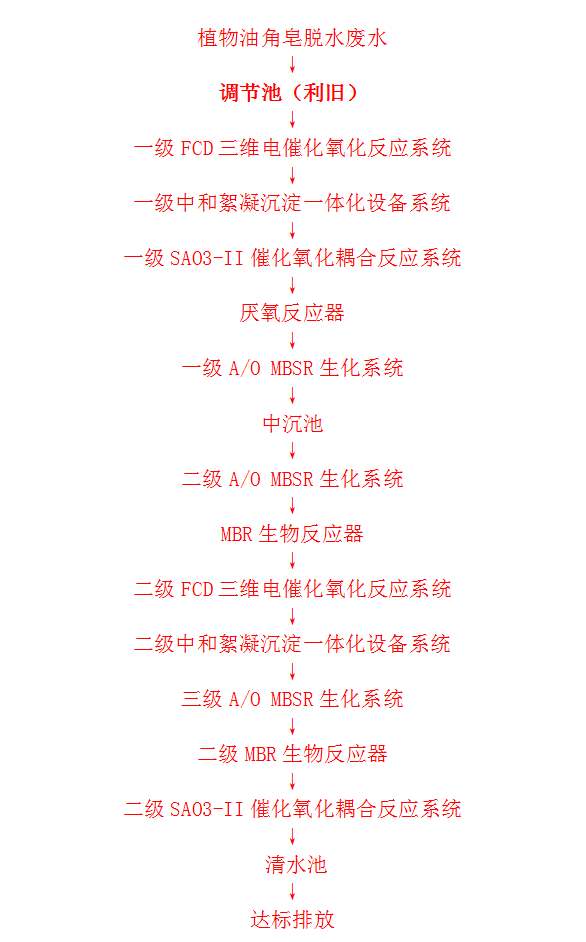Plant saponification acidification wastewater treatment technology
The FCD electrocatalytic particle electrode is submerged in the wastewater, and under the condition of external voltage, a voltage difference is formed on both sides of the porous electrode, which causes a current in the aqueous solution of the wastewater, prompting the FCD electrocatalytic material and the solution to cause a redox reaction, generating a large number of [-OH] hydroxyl radicals, and causing the degradation reaction of organic matter.
Keywords:
Plant saponification acidification wastewater treatment technology

Hotline:
相关内容
Classification:
- Description
-
- 商品名称: Plant saponification acidification wastewater treatment technology
The FCD electrocatalytic particle electrode is submerged in the wastewater, and under the condition of external voltage, a voltage difference is formed on both sides of the porous electrode, which causes a current in the aqueous solution of the wastewater, prompting the FCD electrocatalytic material and the solution to cause a redox reaction, generating a large number of [-OH] hydroxyl radicals, and causing the degradation reaction of organic matter.
The FCD electrocatalytic particle electrode is submerged in the wastewater, under the condition of external voltage, the voltage difference is formed on both sides of the porous electrode, and the current occurs in the aqueous solution of the wastewater, prompting the FCD electrocatalytic material and the solution to cause redox reaction, generating a large number of [-OH] hydroxyl radicals, causing the degradation reaction of organic matter. The result of the reaction is that toxic, long-chain and ring-like heteroatomic organics get electrons and undergo degradation reactions such as ring-opening and chain-breaking, the functional groups of toxic organics are destroyed, microbial toxicity disappears, long-chain difficult to biochemically degrade organics break chains and transform into small molecules, ring-like and heterocyclic organics open rings and part of them eventually degrade into CO2 and H2O, while the active iron in the particle electrode material loses electrons and becomes divalent or trivalent iron ions into solution. Because of the flocculation effect of iron ions under slightly alkaline conditions, it is heteroelectrically attracted to the weakly negatively charged particles in the pollutants, forming stable flocs for separation and removal.

Related products
Online message
We will contact you within one working day. Please pay attention to your email.
